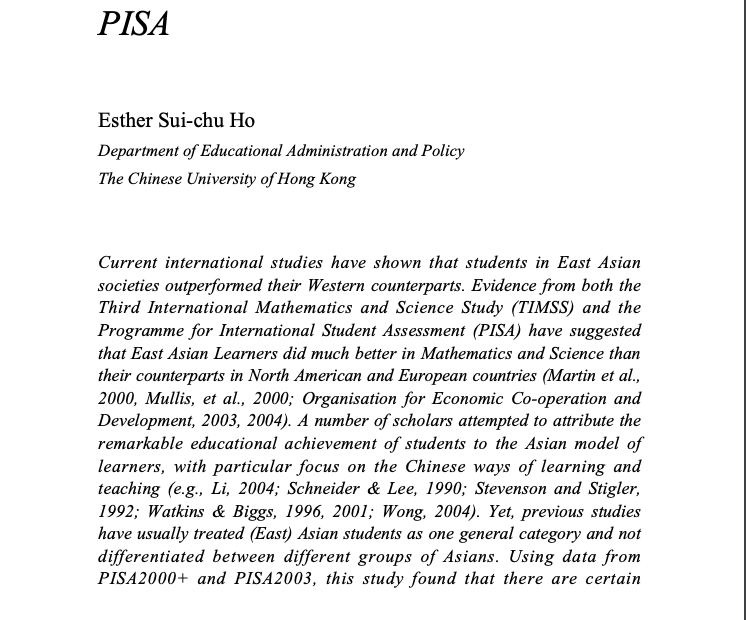
| Current international studies have shown that students in East Asian societies outperformed their Western counterparts. Evidence from both the Third International Mathematics and Science Study (TIMSS) and the Programme for International Student Assessment (PISA) have suggested that East Asian Learners did much better in Mathematics and Science than their counterparts in North American and European countries (Martin et al., 2000, Mullis, et al., 2000; Organisation for Economic Co-operation and Development, 2003, 2004). A number of scholars attempted to attribute the remarkable educational achievement of students to the Asian model of learners, with particular focus on the Chinese ways of learning and teaching (e.g., Li, 2004; Schneider and Lee, 1990; Stevenson and Stigler, 1992; Watkins and Biggs, 1996, 2001; Wong, 2004). Yet, previous studies have usually treated (East) Asian students as one general category and not differentiated between different groups of Asians. Using data from PISA2000+ and PISA 2003, this study found that there are certain convergences in the East Asian societies which might be seen as the primary cognitive habitus that are shared by the Confucian Heritage Culture (CHC) societies. However, both divergence and convergence were found which gave us a new understanding of the characteristics of East Asian learners, their learning strategies and learning environment. |
Author(s): Sui-Chu Ho
Year Published: 2009
Language: English
Country: China


